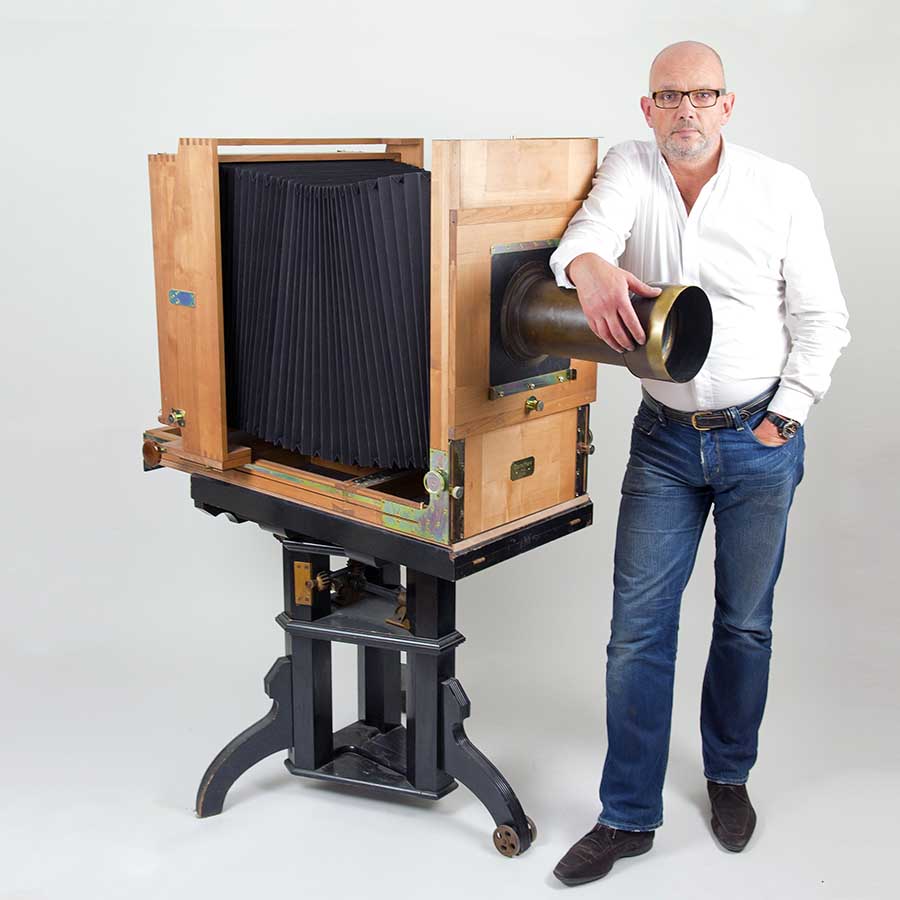It’s great to have a wonderful portfolio of photographs to showcase your technique and creativity, but you’ll need to be fully aware of how to go about selling such work. Steve Fairclough spoke to three photographers to discover their advice for how to start selling your photographs, the best ways to sell images and what they’d advise photographers who are taking their first steps towards putting their pictures up for sale.
What you’ll learn
- How to start selling your pictures
- The importance of keeping control of your work
- Why it’s vital to showcase work in different markets
- The best ways to sell your images
- Tips for young photographers wanting to sell their work
What you’ll need
- Knowledge of all the options for selling images
- Networking skills to gain exposure for your work
- A pro-spec camera kit with a back-up body
- A high-quality hard drive to back up your work
- A computer with enough memory to handle image editing
Whilst many pro photographers may be shooting for or represented by agencies for most of us selling images will boil down to how best to market our own images. To get some crucial advice and useful tips about selling pictures Camera Jabber spoke to fine art photographer Alex Timmermans, marine photographer Kos Evans and landscape photographer Dan Cook.
How to start selling images
Every photographer will have their own ideas about what they want in their images but it’s just as crucial to know what you want to do with your finished images. Whether you regard yourself as relative novice or an old hand at photography there’s little to beat the kick you can get out of selling your work.
 Since 2009 Dutch photographer Alex Timmermans has eschewed the use of digital cameras to work on his wet collodion projects. He uses large format wet plate cameras to shoot his highly imaginative images, including his ‘Storytelling’ series of images, and is represented by a variety of galleries around the world – you can find out more about him at: www.alextimmermans.com
Since 2009 Dutch photographer Alex Timmermans has eschewed the use of digital cameras to work on his wet collodion projects. He uses large format wet plate cameras to shoot his highly imaginative images, including his ‘Storytelling’ series of images, and is represented by a variety of galleries around the world – you can find out more about him at: www.alextimmermans.com
To explain his initial steps in selling his images Alex reveals: “As clients are paying a lot of money for my works I first of all decided to print everything myself… just to have full control over the whole process. It’s not only the print but even more important is the framing. I use the best quality frames and always cover my prints with non-reflective museum glass.”
 Kos Evans is an internationally famous marine photographer who thinks nothing of being at the top of a mast on one of the world’s largest yachts or dangling out of a helicopter to get an amazing action shot. When she’s not out shooting she manages an extensive picture library, Kos Picture Source, which includes her pictures and the work of other marine photographers. You can discover her main website at: www.kosphotos.com and her library at www.kospictures.com
Kos Evans is an internationally famous marine photographer who thinks nothing of being at the top of a mast on one of the world’s largest yachts or dangling out of a helicopter to get an amazing action shot. When she’s not out shooting she manages an extensive picture library, Kos Picture Source, which includes her pictures and the work of other marine photographers. You can discover her main website at: www.kosphotos.com and her library at www.kospictures.com
In terms of how she first approached selling her pictures Kos says: “I would go and shoot an event and then send the pictures to the newspapers and magazines. Once I had work published, I then would call the magazines to let them know what I was covering and they started to commission me to do specific work for them.
“I then specialised my work and would then be commissioned by advertising agencies for my specialisation.”
 Dan Cook is a landscape and nature photographer from the UK who has recently started using the Fuji GFX 50S medium format camera to help him to produce higher quality prints. You can find Dan’s website at: www.danscape.co
Dan Cook is a landscape and nature photographer from the UK who has recently started using the Fuji GFX 50S medium format camera to help him to produce higher quality prints. You can find Dan’s website at: www.danscape.co
He reveals: “My first approach to start selling prints of my images was via my own website and also via Etsy.
“I listed most images on my own site and then a select few of them on Etsy. Initially I offered only square format framed images on Etsy to try and give a consistent product.”
The best ways to sell images
All three of our featured photographers were asked about, in their experience, what are the best ways to sell photographic images? Here’s how they responded…
Alex replies: “I sell my work only through my representing galleries. But at the beginning you could try to sell it locally like in the interior of a shop, pub, restaurant etc. But I am confident that it works the best through galleries.”
Dan advises: “I quickly found that selling via a marketplace such as Etsy was the most successful for online sales. It is difficult to market your own site as it takes time and often money to attract visitors who are ready to buy prints. A site such as Etsy does a lot of that work for you, bringing customers and also giving them confidence to purchase online. I have also found selling prints at local art and craft fairs to be successful. Again this relies on how well the event is marketed, so as to bring visitors, but selling locally also tends to lead to repeat purchases from collectors.”
For Kos Evans variety is the key… she says: “The best way to sell pictures has been to create a number of collections showing the variety of your styles and then present that to clients. It’s important to think outside the box, don’t follow the crowd and focus on the area of photography you like best, the products you would like to photograph, or the magazine you would like to work for.”
Top tips for selling photos
When quizzed on the best advice they would give to younger photographers who are looking at starting to sell their images several key factors arose…
Alex says: “Invest in a good presentation. Put your prints in a portfolio map. Have one print professionally framed to show, then try to make an appointment with galleries. But be aware that you are not the only one. Good galleries get many requests every single day. So your work has to be special, good, challenging etc. Don’t visit art fairs with your portfolio map under your arms! That won’t work.”
He adds: “And besides this, be active on social media. Make sure you have a professional looking page on Facebook and Instagram showing your work and no family pictures or nice dinner pics. And last, but not least, a website.”
Kos replies: “It’s much harder today as everyone thinks they are a photographer now they have their smartphones. I’d say persistence and finding your USP [is key]. Focus on one outlet for your work and don’t give up with the knock backs that you get starting out, but always listen to the buyer’s advice when they review your work.
“Most importantly, don’t devalue yourself, defend your style and believe in yourself. I had to commercialise my work in the early days as I was too ‘out there’ with my style, but I tried to keep an identity and an edge to the commercial work, which later allowed me the luxury of shooting every commission I got in my own style.”
Dan advises: “I would recommend starting out by listing prints in several marketplaces, rather than spending lots of time on your own website. You can develop your own online store at a later point and start to understand which prints, sizes, formats etc are the most popular. If you have the money to set up for art and craft fairs this is the best way to connect with local buyers and understand what prints are most successful. It’s also a really rewarding experience and gives more purpose to your photography.”
The key choices
Hopefully you’ll have realised from the advice above that any photographer will have a number of choices to make with regards to how they sell their images. Some of those are logical – for example, you would have to invest in high quality printing and framing if you’re marketing your work as fine art – and some artistic or business driven. The trick is working out what works best for you.
You may have to make some initial compromises in order to make sure your work sells but, once you’re more established, you will have more control.
Consider if you need to market face-to-face, build a website, go on Facebook and Instagram, get a gallery to represent you or if you need to sell through other channels, such as Etsy or a local market. In the end it’s best to simply do what works for you… after all, the choices are yours!



